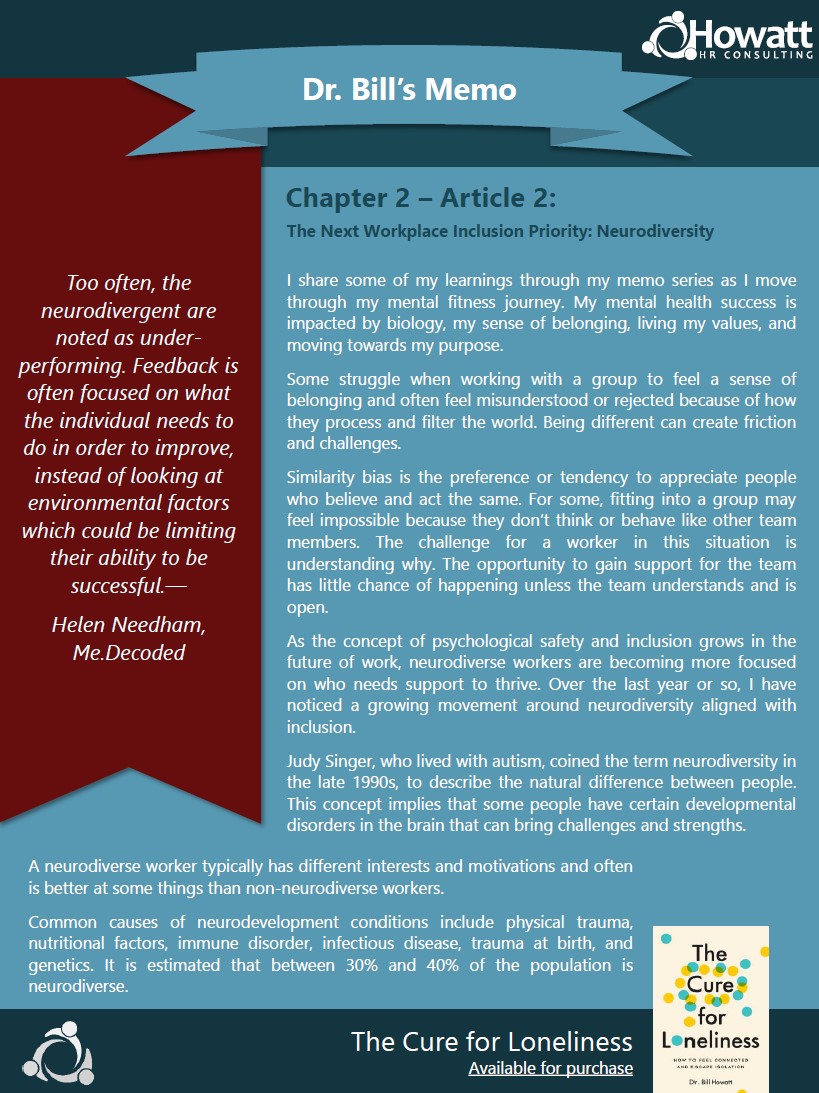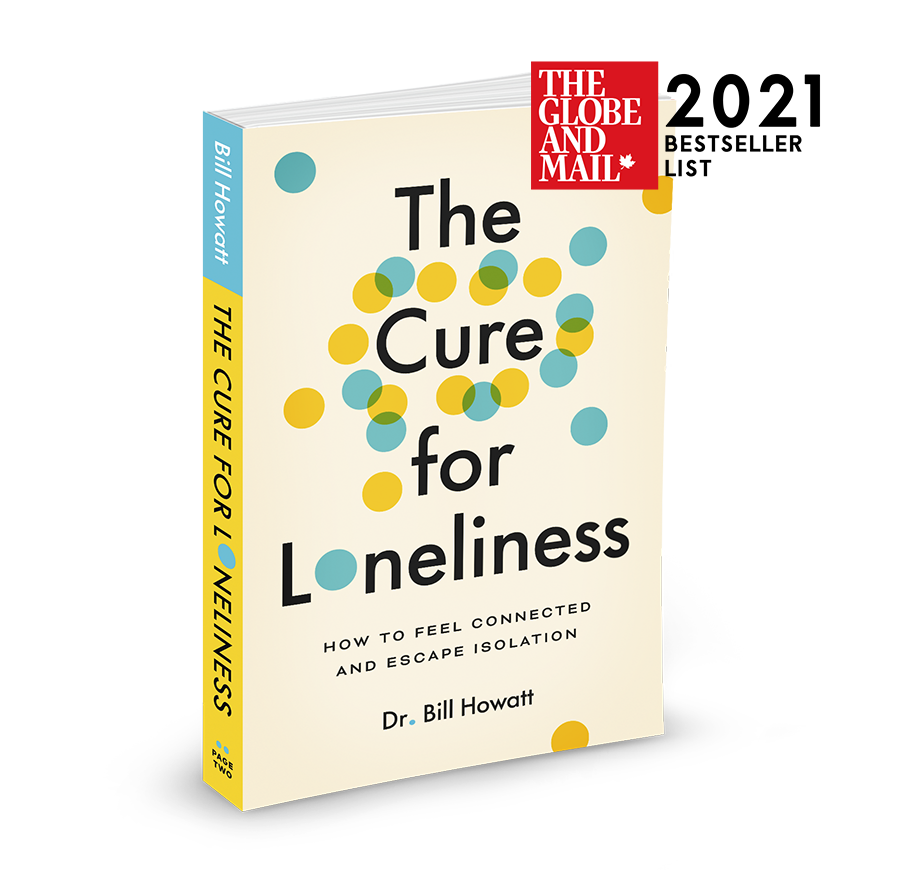The Next Workplace Inclusion Priority: Neurodiversity
I share some of my learnings through my memo series as I move
through my mental fitness journey. My mental health success is
impacted by biology, my sense of belonging, living my values, and
moving towards my purpose.
Some struggle when working with a group to feel a sense of
belonging and often feel misunderstood or rejected because of how
they process and filter the world. Being different can create friction
and challenges.
Similarity bias is the preference or tendency to appreciate people
who believe and act the same. For some, fitting into a group may
feel impossible because they don’t think or behave like other team
members. The challenge for a worker in this situation is
understanding why. The opportunity to gain support for the team
has little chance of happening unless the team understands and is
open.
As the concept of psychological safety and inclusion grows in the
future of work, neurodiverse workers are becoming more focused
on who needs support to thrive. Over the last year or so, I have
noticed a growing movement around neurodiversity aligned with
inclusion.
Judy Singer, who lived with autism, coined the term neurodiversity in
the late 1990s, to describe the natural difference between people.
This concept implies that some people have certain developmental
disorders in the brain that can bring challenges and strengths.
A neurodiverse worker typically has different interests and motivations and often is better at some things than non-neurodiverse workers.
Common causes of neurodevelopment conditions include physical trauma,
nutritional factors, immune disorder, infectious disease, trauma at birth, and genetics. It is estimated that between 30% and 40% of the population is neurodiverse.
All the best – Dr. Bill Howatt

Dr. Bill's Memo - Chapter 2, Article 2
Send download link to:

